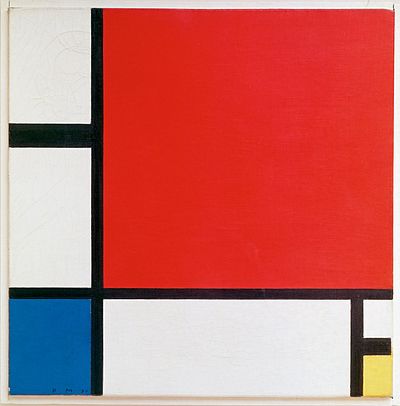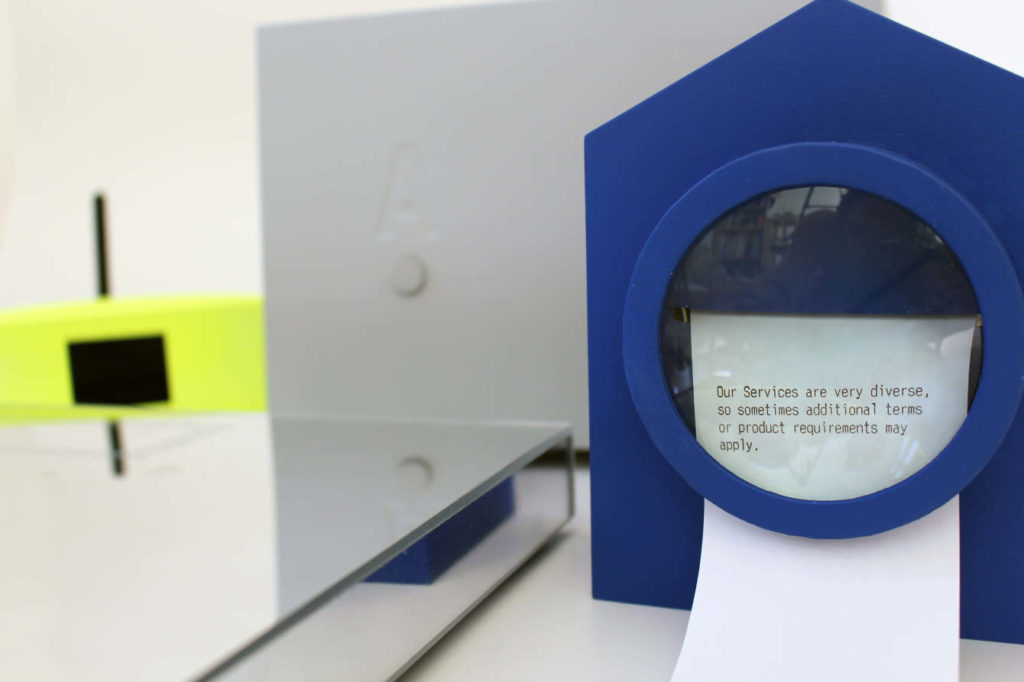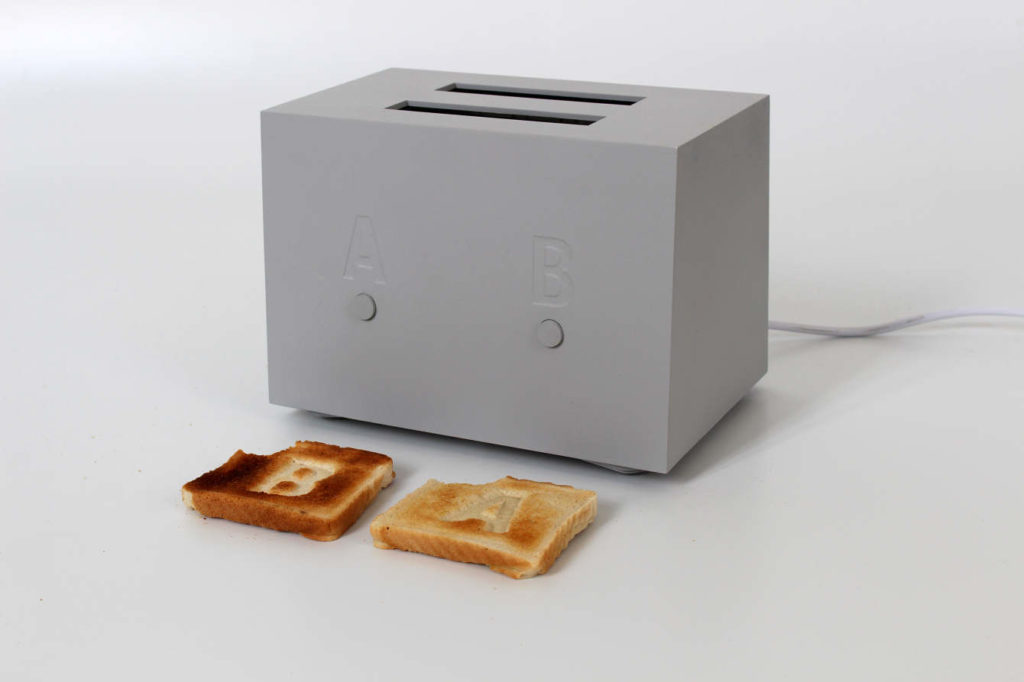Designers of the future
problem-solvers or problem-seekers?
Sep. 2018, by Qian Liu
15 min read
Since my very first lesson in design, I have frequently been asked which problem needs to be solved during the process of design.
The rapid development of the internet industry has significantly shortened the lifespan of novel ideas and products. In order to meet various needs of users, and to comply with the market development, problem solving has become the most important guidance for designers. Design thinking, as a problem-solving mode of thinking, is prevailing in the field of design. As the CEO of IDEO said, design thinking is a human-centered approach to innovation that draws from the designer’s toolkit to integrate the needs of people, the possibilities of technology, and the requirements for business success [1]. Recently, some successful examples based on design thinking have attracted a great amount of attention, such as Airbnb, Square, and GitHub, etc. Many Internet companies have now regarded design as the core value of the company. Following this trend, many startups are also emphasizing the importance on design.
On the other hand, as the concept of design thinking has been overly touted and even deified, it has also received lots of critics. For instance, Don Norman, a famous interactive designer, has published “Design Thinking: A Useful Myth” [2] to criticize the excessive emphasis on design thinking, and to clarify the common misunderstanding that designers possess special magic, are able to solve all kinds of problems, and bring huge profits to companies or enterprises.
Design thinking is a problem-oriented design. The main design method is the user-centered design, that is, to discover the real needs of the users, and to design products that satisfy such needs. However, it is risky to simply satisfy the immediate needs. In this way, it has the tendency to treat humans as “domestic animals” by means of design and technology, feeding them when hungry, and letting them sleep when sleepy. Moreover, the drawbacks of this approach have gradually emerged.
For example, users would like to know the news that are most interesting to them in the fastest possible way. To meet this need only, designers will provide with, say, a mobile application that sends the users exclusively the news that they are interested in, and completely filters out all the rest. As a user, you might think that this product is quite considerate, and understands yourself surprisingly well, but meanwhile you fail to notice that such a “perfect” solution has already treated you as domesticated animals, in a way like a frog sitting at the bottom of a well, seeing only the tiny part of the sky (individually filtered information). In recent years, the short videos application TikTok [3] is among the top rank in all major application stores. It takes full advantage of the fractal time in our daily life, and provides you with a piece of short video whenever you are boring, which instantly grabs your eyes. Originally, you only want to kill 10 second boredom by watching one video, but most likely end up with more, and may even find it hard to stop. This could often cost you a few hours, and the normal work-life rhythm would therefore be disrupted.
The world has suddenly changed into a fairy world consisting of only what you want or willing to see, thanks to the “perfect” products around you. Behind such products are the designers who are proud of treating you as fools. Based on the needs of users, designers have succeeded in making the aforementioned news mobile application and TikTok become popular products. The former allows the users to get interesting information even without searching, and the latter can make the users “busy” over countless boring 10 seconds. However, is this really what designers should do?
My opinion is that the future designers need another prospect to find out problems, and to pose questions, in such a way that it will motivate people to think about, e.g., how to better coordinate with the world, and to speculate on the possible consequences from the current situation. In the following, I will discuss in detail, why it is more important for designers to pose problems than to solve problems.
Designers can do MORE than solve problems
Marcel Duchamp once said,“There is no solution because there is no problem.’’ If designers have to be labeled as problem-solvers, can we understand it as “There is no designer because there is no problem.”? Or alternatively, are solving problems the pre-request for designers? For instance, Piet Mondrian’s design work “Composition II in Red, Blue, and Yellow, 1930” is not a solution at all, so can we infer that he is not a designer?
The answer is of course negative! Design as a purposeful creative activity is a tool for solving problems, and it does create a lot of value for people. Meanwhile, design is, however, a multi- dimensional and ambiguous concept, which will exhibit different purposes and forms under different contexts.
The conceptual design includes speculative design, critical design, design fiction, design future and many other forms. British design studio Dunne & Raby have intensively discussed critical design and speculative design in their book “Speculative Everything” [4]. In contrast to the problem-solving design, these are the design that leads the users to discover problems. By means of a sophisticated and impressive design product, they motivate people to think and discuss on certain topics, and are in essence a stimulus, beyond the final product itself.
Thus, designers can do much more, apart from solving problems. Matt Wade, a creative director of Google creative labs, shared his design principles in one interview, and he said, “It’s certainly not as simple as problem solving. Yes, that’s one thing designers do, but so do butchers and bakers and candlestick makers.” [5] Calling the designers problem solvers narrows the scope of what they are actually capable of achieving and able to offer the users/non-designers.
“Who is the object in Internet of things (IoT)?” [6] is the design work by UX Designer Iohanna Nicenboim. It is the winner of the Best Design Fiction Project at the 2015/16 IoT Awards. The project explores the IoT, and creates four narrative prototypes, to discuss some of the challenges we might face in adopting this technology. For example, what are the implications of giving objects more power? What is our new role as humans in these systems? Who is the real object in the IoT? In order to explore these questions, she imagined fictional prototypes and pointed out at three main paradigms for the IoT:
- (a) houses are becoming labs;
- (b) objects are becoming services;
- (c) humans are becoming objects.
The next example is the Terms of Service Printer, one of Nicenboim’s design works. In the present days, we constantly accept the terms of the digital services, even without reading them. However, how will this look like when the services become physical as part of our everyday life? What will be the terms of our houses? Will we still have the chance to decline these services?
Nicenboim believes that, because the IoT is the transition of the Internet from the digital to the physical world, the terms of service will also do such transformation. In order to reveal this problem, she has created a printer, which automatically prints the terms and conditions of every device that connects to your network. As the printer has no accept or reject button anymore, it points at some of the challenges we would encounter in the adoption of pervasive technologies at home. Thus, this design serves as a tool to discuss the conditions under which we want to adopt technology in our lives.
Another design product is A/B Toaster, by Nicenboim. This smart toaster is trying to find the perfect toast for you by using a common method: the A/B test. Every day it will present you with two options (A/B), from which you have to choose the one you prefer. Thus, the toaster is able to learn your preferences. The problem is that once it finds the perfect toast, it will start charging you for it!
When most designers are working on solutions to “How to make toasters smarter or more humane?”, Nicemboim has already taken a further step. Let us imagine the following scenario: The products we use on a daily basis starts to experiment on us, and collect and analyze data from us, putting us under investigation; Just like the A/B tests posed by toasters, the product is indeed smart and individualized, but is this really what we need? In the future IoT world, are we ourselves actually the so-called “things”? The project ‘Who is the object in IoT?’ does not solve any problems. On the contrary, Nicemboim reveals problems through her design works, and motivates our reflections on the impact of the development of IoT in future and on the consequences of continuing to use the same model. Therefore, designers can do more than solve problems.
Designers can do BETTER than solve problems
Every profession has its own professional strengths. The most powerful weapon of designers is their empathy and creativity. Designers can use their empathy to dig out the real needs behind users, understand the goals of users (finding problems), and use their creativity combined with the technology to design products that satisfy the users (solving problems). However, as the purpose of design goes deeper, the scope and the influence of design in fact increases.
Designers can have higher missions and responsibilities, and can make better products than simply solve problems. In other words, not to solve problems, designers can still create a wonderful user experience and design a perfect product.
Japanese designer Yoshinaka Ono printed the daily news on mineral water bottles. He visually redesigned the typesetting of newspapers, which did not change much in the way people read newspapers, but presented traditional newspapers in new forms [7]. Regarding this packaging design, the designer does not solve any substantial problems, but such a product is quite well received in Japan, being very popular among users. While providing an excellent user experience, it inspires more discussion about the design and the topic of information media, by means of a sophisticated design product.

“Some people (they are wrong) say, design is about solving problems. Obviously, designers do solve problems, but then so do dentists. Design is about cultural invention.”
[8] This quote is from Kicker Studio’s interview with Jack Schulze, who is one of the principals at the business. Dunne & Rabyd in their book [4] wrote, “… questions, thoughts, ideas, and possibilities, all expressed through the language of design. They probe our beliefs and values, challenge our assumptions, initiate discussions or debates and encourage us to imagine how what we call nature could be different.”
Conclusion
Today, big data and artificial intelligence have begun to enter our daily lives, the 5G era is opening, and our world has been undergoing earth-shaking changes. How do we get along with these new technologies? As described in the above examples, in the era of the IoT, does human become the so-called “things”? My answer is that designers of the future should stand at a higher level to look at their profession.
A good designer asks questions to uncover the problem, while a bad designer is afraid of seeking “Why”
Tarun Kohli, the founder & CEO of Quovantis
Compared with exclusively solving problems and satisfying users’ needs, I believe that designers in the future should combine their own advantage, and use the language of design to pose questions and raise people’s thinking, e.g., on how better people are able to coordinate with the world, and on the prediction of the consequences caused by the current situation. Just like taking care of a baby, it is not just to satisfy its needs, to feed it and let it rest, but to communicate with it, to stimulate its reflection on its own behavior, and to think about the unknown world.


